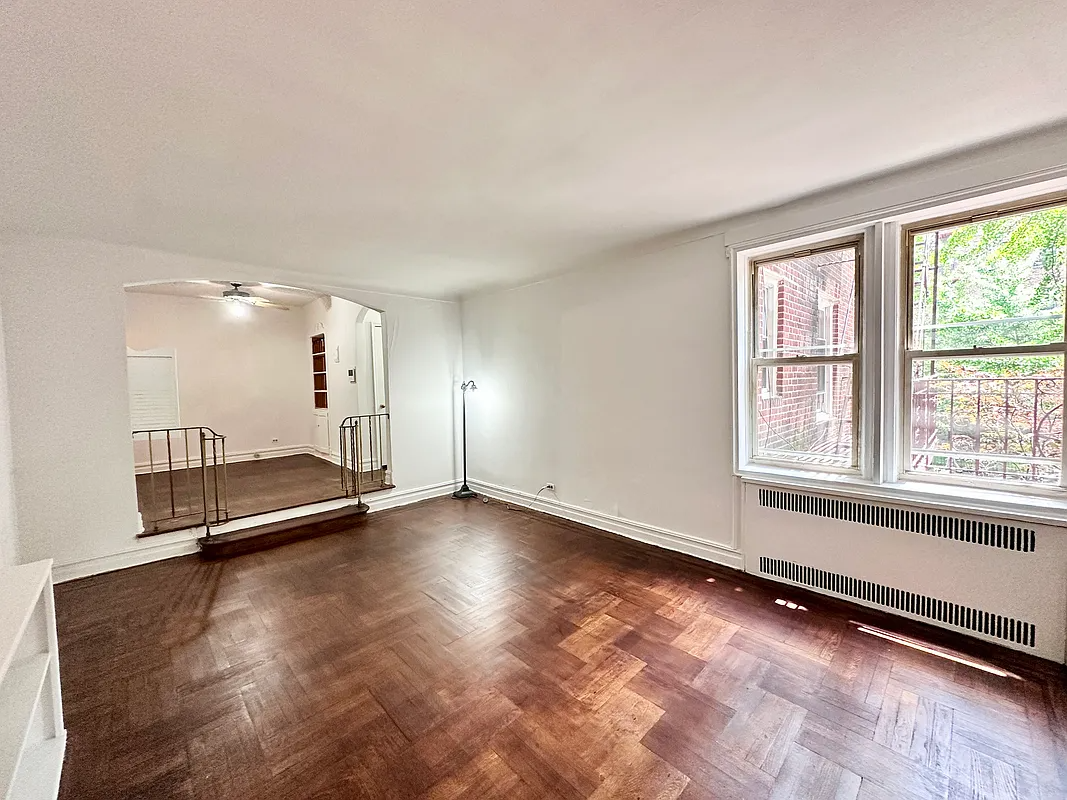Building of the Day: 138 Milton Street, From a Porcelain Prince's Home to a Church
Editor’s note: An updated version of this post can be viewed here. Brooklyn, one building at a time. This free-standing mansion was home to Thomas C. Smith, who also designed and built it. Smith was one of Greenpoint’s important residents — an accomplished architect-builder and successful businessman. Name: Former Thomas C. Smith house, now Greenpoint…

Photo by Christopher Bride for PropertyShark
Editor’s note: An updated version of this post can be viewed here.
Brooklyn, one building at a time.
This free-standing mansion was home to Thomas C. Smith, who also designed and built it. Smith was one of Greenpoint’s important residents — an accomplished architect-builder and successful businessman.
Name: Former Thomas C. Smith house, now Greenpoint Reformed Church
Address: 138 Milton Street
Cross Streets: Franklin Street and Manhattan Avenue
Neighborhood: Greenpoint
Year Built: 1866-67
Architectural Style: Federal, Greek revival, with embellishments
Architect: Thomas C. Smith
Other Buildings by Architect: 111, 117, 119-129 Milton Street, as well as most of the rest of the south side of Milton Street
Landmarked: Yes, part of Greenpoint Historic District (1982)
Thomas C. Smith was a man blessed with both talent and business savvy. He was born in Bridgehampton, Long Island, in 1816. He came to NYC as a young man and was a builder’s apprentice for several years. In 1830, he went out on his own as a builder.
Most builders of that day were their own architects, and Smith was no different. He established a fine business that would lead to Brooklyn. He retired from building in 1863.
The Union Porcelain Works
In the course of Smith’s business he had acquired a small pottery company at 300 Eckford Street as payment for a debt. Due in part to the ongoing Civil War, the firm was in bad financial shape. They had been in business since 1854, mostly producing porcelain doorknobs.
Smith was ready for a new challenge, so he went to France and England to investigate porcelain factories there. He got quite an education and learned the porcelain industry in full.

1911 Brooklyn Eagle ad
When he returned, he put his new knowledge to work and rebuilt his factory, calling it the Union Porcelain Works, the first hard porcelain factory in the United States.
Union Porcelain grew, eventually taking up almost the entire block. Their bread and butter products were mostly restaurantware, as well as porcelain connectors and industrial parts. They also made tiles and other products.

1916 Brooklyn Eagle ad
But they also branched out, and up, producing some of the finest artistic porcelain in the United States. It was even admired and collected in Europe. Under the direction of sculptor Karl Mϋller, Union Porcelain took home great honors at the 1876 Philadelphia Centennial Exhibition, with fine porcelain tea sets, vases and decorative objects. Today, United Porcelain is highly collectable, and many of the exhibition pieces are in museums across the country.

Vase submitted at the 1876 Philadelphia Centennial Exhibition. Photo via Metropolitan Museum of Art
Building Milton Street
Around the time he came back from France, Smith purchased a large piece of land on Milton Street from Governor Samuel Tilden. He built his own home in the middle of it, and proceeded to carefully develop the rest over the next 15 years, designing and building most of the row houses on the south side of Milton Street, as well as other local properties he owned.
He put a lot of thought and effort into his own home. The house is two stories, much wider than it is tall. The 45-by-40-foot house sits on a 62-by-100-foot lot. It’s in an austere Federal style, with embellishments from several period styles.
Smith designed himself a symmetrical house, in keeping with Federal dictates; it had an ornate entryway with a large portico supported by Tuscan-style columns. The windows on both sides of the entryway have heavy pedimented surrounds, and complement the main entrance.

Photo via Google Maps
The sides of the house also have matching protruding bays. The entire house is capped by a wooden cornice with Neo-Grec-style brackets and enclosed behind a handsome wrought iron fence.
In addition to his porcelain works and building, Smith was also president of the Ophthalmic Hospital and College of New York, as well as one of the organizers of the Seventeenth Ward Bank and its president for four years.
He helped to organize the Manufacturers’ Insurance Company, and was a director and trustee for the committee to build a memorial in Manhattan for Ulysses S. Grant. He died in January of 1901, leaving behind a widow, a son and three daughters.
The Union Porcelain Works stayed in business until 1922, when the giant kilns finally cooled down for good. The Brooklyn Museum has many fine examples of the firm’s works in its collection. The factory building itself is long gone.
The house served as Greenpoint’s YMCA until 1944. That year the building was purchased by the Greenpoint Reformed Church, which, 71 years later, still owns it.

Photo by Greg Snodgrass for PropertyShark
Related Stories
Building of the Day: 47-61 Greenpoint Avenue
Building of the Day: 960 Manhattan Avenue
Building of the Day: 98 Noble Street
UPDATE: One of our readers has already done a great deal of research on this house already, much more than I did. He’s written about an intriguing ghost story associated with the house, and has much more information about the Smith family and the Greenpoint Reformed Church. Please check out his information, as well as photographs on his Flickr page. Well done and thanks, Jeff!!!





Love that factory. I suspect that the portico is not original to the house, but an early 20th-century Colonial Revival addition. A special feature of the interior are two white porcelain panels in the fireplace in the rear parlor on the left side of the house. They depict a steamboat, Robert Fulton and Robert Livingston in spectacular detail.